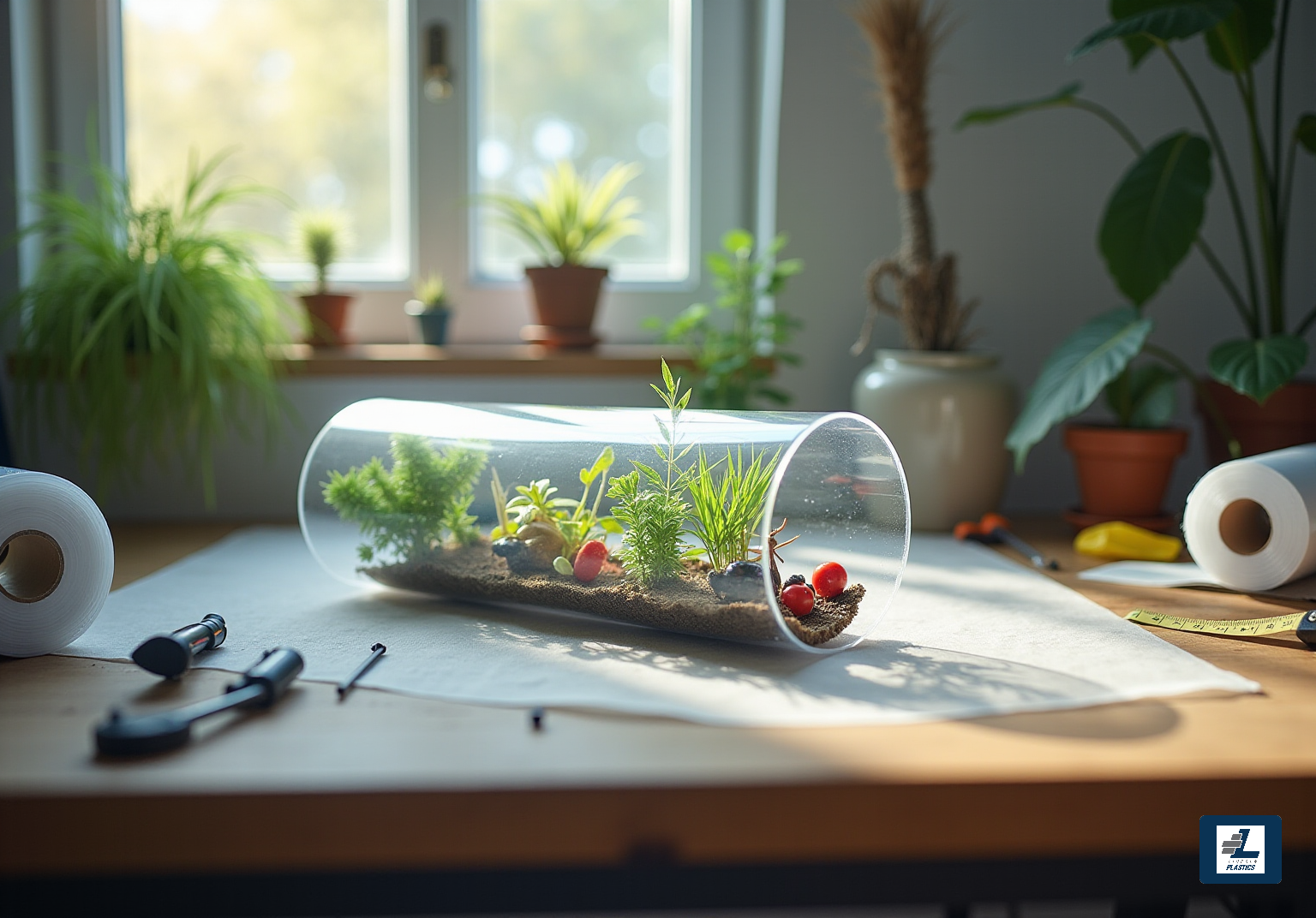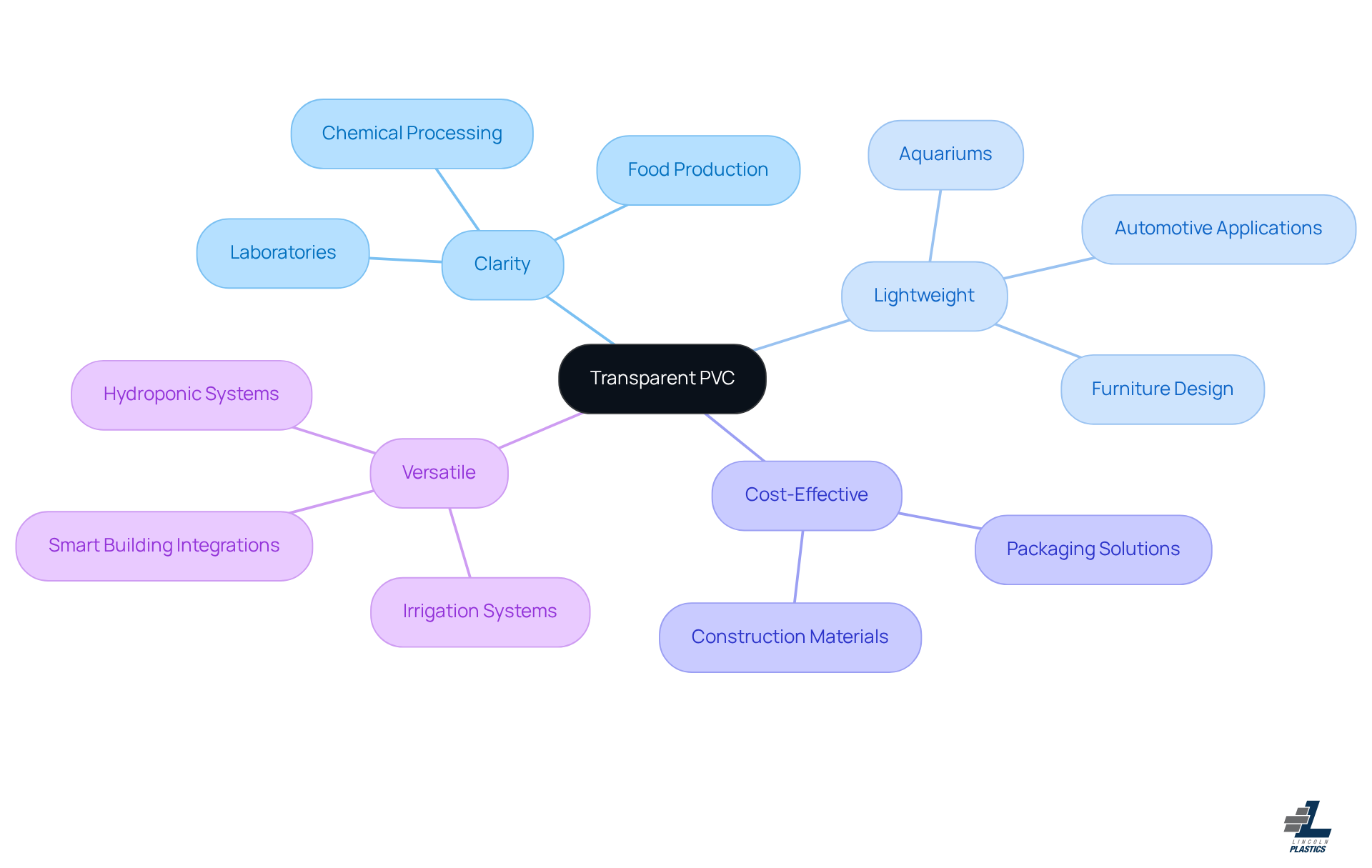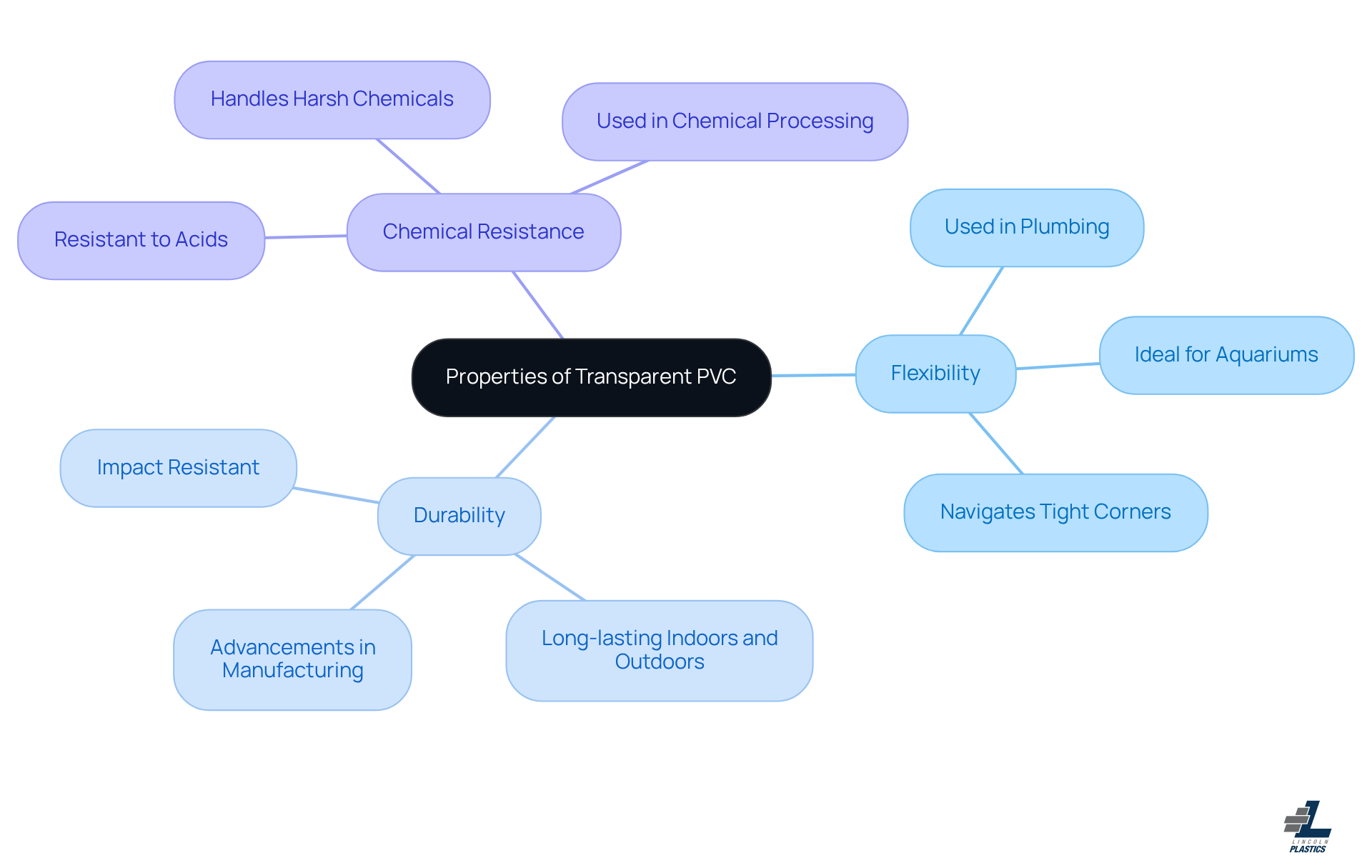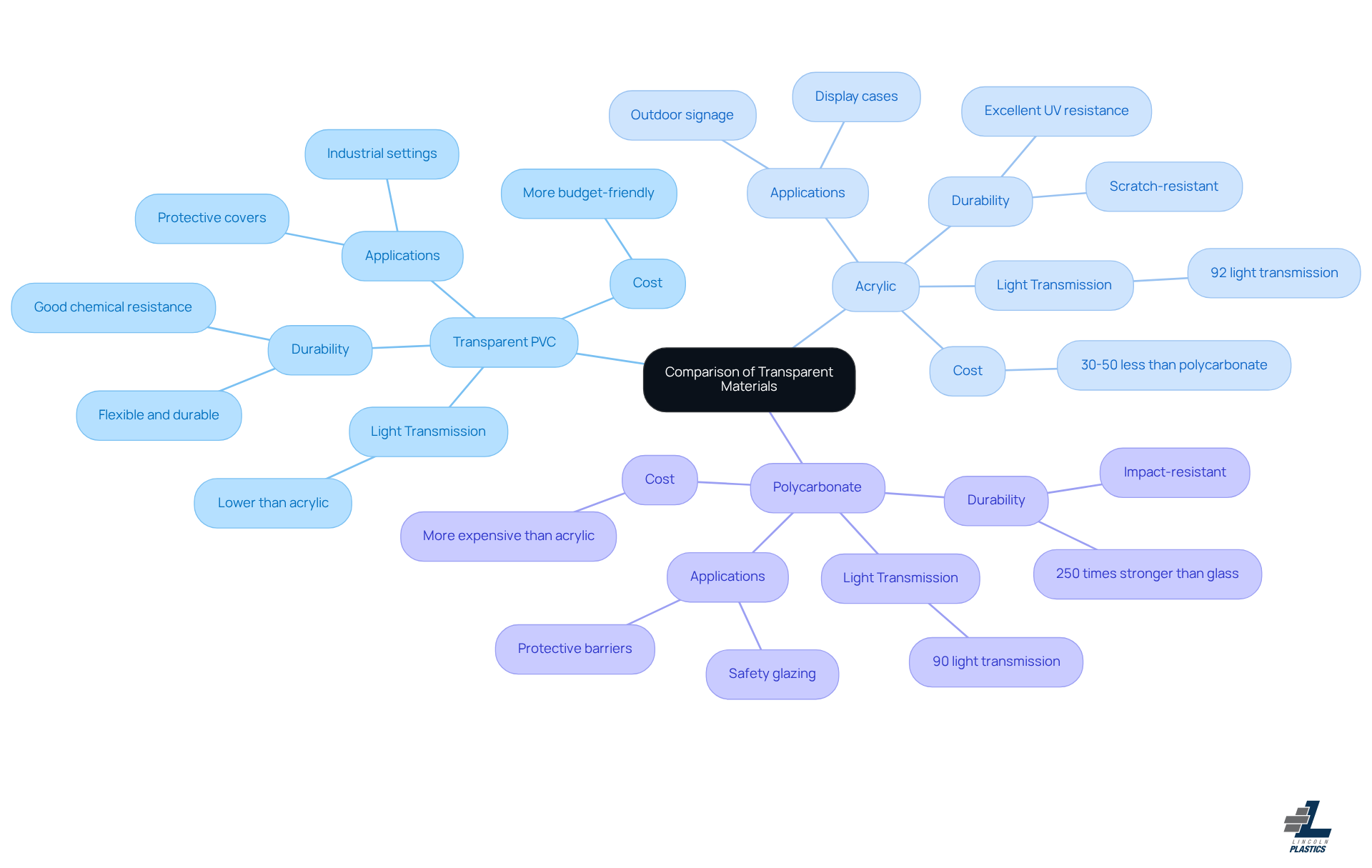
Understanding Transparent PVC: Properties, Uses, and Comparisons
Overview
Have you ever thought about how often we encounter materials that are both practical and versatile? Transparent PVC is one of those unsung heroes! This lightweight, durable thermoplastic is not only cost-effective but also boasts incredible clarity, which makes it perfect for a wide range of uses—from industrial applications to everyday packaging.
Now, let’s talk about why transparent PVC really stands out. It’s flexible and resistant to chemicals, which gives it an edge over alternatives like acrylic and polycarbonate. Imagine how adaptable it is across various sectors! Whether you’re in manufacturing or just looking for reliable packaging solutions, PVC has got you covered.
So, next time you come across transparent PVC, remember its impressive properties. It’s more than just a material; it’s a solution that fits seamlessly into many aspects of our lives. Why not explore how it can work for you?
Introduction
Have you ever wondered about the materials we use every day? Transparent PVC, or polyvinyl chloride, is one of those fascinating thermoplastics that really shines when it comes to clarity and versatility. It’s a go-to choice across various industries, and for good reason!
In this article, we’re diving into what makes transparent PVC so special. You’ll discover its benefits, like being lightweight, cost-effective, and impressively durable. But wait—what happens when we stack it up against alternatives like acrylic and polycarbonate? As the demand for visibility and sustainability grows, it’s worth exploring how transparent PVC measures up.
So, let’s unpack these aspects together! We’ll not only highlight the significance of this material but also discuss the challenges and choices that manufacturers and consumers face. Ready to jump in?
Define Transparent PVC: Key Characteristics and Importance
Have you ever thought about how important visibility is in certain applications? Clear PVC, or polyvinyl chloride, is a fantastic thermoplastic that really shines in this area. It's known for its clarity and transparency, making it a go-to choice when you need to see what's inside. Let’s dive into some of its standout features:
- Clarity: Transparent PVC offers amazing optical clarity, which means you can easily see the contents. This is especially helpful in industries like chemical processing and food production.
- Lightweight: It's much lighter than glass, so handling and installation are a breeze. This is super handy in complex setups, like aquariums or lab environments.
- Cost-Effective: Typically, it's less expensive than options like acrylic or polycarbonate. This makes transparent PVC an affordable option for a wide variety of applications, especially in packaging and construction.
- Versatile: You can shape and extrude transparent PVC into all sorts of forms and sizes. Whether it’s for plumbing systems or decorative furniture design, it fits the bill.
But it’s not just about the physical properties. Transparent PVC combines functionality with a bit of flair, making it a favorite across various industries. Recently, we’ve seen it pop up in smart building integrations and sustainable packaging solutions. Isn’t that exciting?
Think about real-world examples: it’s used in hydroponic systems for monitoring nutrients and in automotive fuel lines where clarity helps spot potential issues. As the PVC sector continues to evolve, transparent PVC remains a staple, balancing performance with visual accessibility. So, whether you're in construction, food production, or any other field, consider how this versatile material can work for you!

Explore Properties of Transparent PVC: Flexibility, Durability, and Chemical Resistance
Have you ever thought about the materials that make our everyday lives a bit easier? Transparent PVC serves as a fantastic example, featuring properties that significantly enhance its usability in various applications.
First up, let’s talk about flexibility. This material can be made with different levels of bendiness, which means it can twist and turn without breaking. Imagine plumbing systems or aquariums—flexible clear tubes are perfect for navigating around obstacles and ensuring smooth water flow.
Now, what about durability? Transparent PVC is tough! It stands up to impact and wear, which means it lasts a long time, whether indoors or outdoors. Recent advancements in manufacturing have made it even more durable, making it a solid choice for those challenging industrial environments.
And we can’t forget about chemical resistance. Transparent PVC is capable of handling a variety of chemicals, including acids and alkalis. This is super important in industrial settings where harsh substances are common, like in chemical processing or packaging. Its ability to withstand these conditions makes it a go-to option for manufacturers seeking reliable materials.
Thus, when you combine all these characteristics, it’s evident that transparent PVC is a wise option for both producers and users. It ensures that products made from this material can meet the demands of their intended uses. Isn’t it great to know there are materials out there that can handle so much?

Examine Applications of Transparent PVC: From Industrial to Residential Uses
Transparent PVC is an incredibly versatile material that appears in various applications, demonstrating its adaptability and effectiveness across different sectors.
Let’s start with industrial applications. You’ll often find transparent PVC utilized for protective barriers, machine guards, and safety screens. Its durability and clarity make it a go-to choice when visibility and safety are key.
Now, if we look at packaging, especially in the food industry, transparent PVC plays a crucial role. It allows consumers to see the product while keeping it fresh. Did you know the global market for transparent plastic packaging is expected to grow significantly? It’s projected to jump from USD 158.2 billion in 2025 to USD 280.4 billion by 2035, thanks to the rising demand for visibility and sustainability in food packaging solutions.
Moving on to construction, this material is also great for windows, doors, and roofing components, providing a lightweight and transparent PVC alternative to traditional glass. Plus, its resistance to impact and weathering makes it even more suitable for various construction uses, all while having a lower embodied carbon compared to materials like iron and copper.
When it comes to signage, transparent PVC truly stands out. It’s perfect for illuminated signs and displays where clarity and light transmission are crucial. Its ability to withstand outdoor conditions while keeping its transparency makes it a favorite for both indoor and outdoor signage.
These varied uses really highlight how important transparent PVC has become in today’s manufacturing and construction world. It’s all about improving product visibility, safety, and sustainability. As Susan Wade puts it, "PVC is one of the most studied materials in the world," which really underscores its significance in so many industries.

Compare Transparent PVC with Alternative Materials: Benefits and Drawbacks
When considering transparent PVC, it’s super helpful to compare it with acrylic and polycarbonate. This way, you can really grasp their unique properties and where each shines best.
Transparent PVC vs. Acrylic: Think about acrylic for a moment. It’s fantastic when it comes to scratch resistance and UV stability, boasting around 92% light transmission. This makes it a go-to choice for outdoor projects where you need both clarity and durability. On the flip side, clear PVC tends to be more budget-friendly and easier to handle, which is great news for those of us watching our wallets.
PVC vs. Polycarbonate: Now, let’s chat about polycarbonate. This material is a powerhouse, offering impact resistance that’s about 250 times stronger than glass. It’s perfect for high-stress environments like safety glazing and protective barriers. But here’s the kicker: Transparent PVC is not only lighter but also typically more affordable, making it a smart choice for everyday applications where extreme durability is not required.
By comparing these options, both manufacturers and consumers can make better choices based on what they really need for their projects. It’s all about balancing cost, performance, and how well each material fits the application.

Conclusion
Transparent PVC is truly a standout material! It combines clarity, flexibility, and cost-effectiveness, making it a must-have across various industries. Think about it: its optical clarity and lightweight nature are super valuable for everything from food packaging to construction. The versatility of transparent PVC means it can meet the demands of modern manufacturing and design, all while providing visual accessibility and safety.
Now, let’s talk about some key points:
- Its durability and chemical resistance really enhance its usability in challenging environments.
- You might be surprised at how transparent PVC plays a crucial role in industrial applications like protective barriers and safety screens.
- Plus, with its growing importance in sustainable packaging, it’s clear that this material is significant in today’s market.
- When you compare it to alternatives like acrylic and polycarbonate, you’ll see its advantages, especially when it comes to affordability and ease of handling.
Ultimately, understanding the properties and applications of transparent PVC reveals just how vital it is for enhancing product visibility, safety, and sustainability. As industries continue to evolve, embracing transparent PVC can lead to innovative solutions that prioritize both performance and environmental responsibility. So, if you’re considering materials for your projects, transparent PVC is a compelling option that beautifully balances functionality with visual appeal.
Frequently Asked Questions
What is transparent PVC?
Transparent PVC, or polyvinyl chloride, is a thermoplastic known for its clarity and transparency, making it ideal for applications where visibility of contents is important.
What are the key characteristics of transparent PVC?
The key characteristics of transparent PVC include amazing optical clarity, lightweight nature compared to glass, cost-effectiveness, and versatility in shaping and extrusion.
In what industries is transparent PVC commonly used?
Transparent PVC is commonly used in industries such as chemical processing, food production, construction, packaging, and even in smart building integrations and sustainable packaging solutions.
Why is the clarity of transparent PVC important?
The clarity of transparent PVC is important because it allows for easy visibility of contents, which is crucial in applications like chemical processing and food production, where monitoring is essential.
How does transparent PVC compare to other materials like glass or acrylic?
Transparent PVC is lighter than glass, making it easier to handle and install. Additionally, it is typically less expensive than acrylic or polycarbonate, making it a more cost-effective option for various applications.
Can transparent PVC be used in innovative applications?
Yes, transparent PVC is being used in innovative applications such as hydroponic systems for monitoring nutrients and in automotive fuel lines where clarity helps identify potential issues.
What makes transparent PVC a versatile material?
Transparent PVC is versatile because it can be shaped and extruded into various forms and sizes, making it suitable for a wide range of applications, from plumbing systems to decorative furniture design.
List of Sources
- Define Transparent PVC: Key Characteristics and Importance
- What Is Clear PVC Pipe? Everything You Need To Know | Ctube (https://ctube-gr.com/news/what-is-clear-pvc-pipe.html)
- Trends of New PVC Products: 2025 Innovations & Market Forecasts (https://accio.com/business/trend-of-new-pvc-products)
- The Diverse Applications and Significance of Transparent PVC Tubing (https://kebinghose.com/news/the-diverse-applications-and-significance-of-transparent-pvc.html)
- Explore Properties of Transparent PVC: Flexibility, Durability, and Chemical Resistance
- Scientists develop novel method for strengthening PVC products (https://news.osu.edu/scientists-develop-novel-method-for-strengthening-pvc-products)
- Flexible PVC Films Market to Experience Strong Growth, Projected to Boom at a CAGR of 4.1% by 2031 | TMR Study (https://openpr.com/news/3806848/flexible-pvc-films-market-to-experience-strong-growth)
- Transparent PVC Pipe - Durable, Versatile, and Reliable Solutions (https://lidaplastic.com/news/transparent-pvc-pipe-8925.html)
- The Diverse Applications and Significance of Transparent PVC Tubing (https://kebinghose.com/news/the-diverse-applications-and-significance-of-transparent-pvc.html)
- Examine Applications of Transparent PVC: From Industrial to Residential Uses
- Transparent Plastic Packaging Market to Reach 0.4B by 2035 Amid Inn (https://packnode.org/en/innovation/transparent-plastic-packaging-market-2035)
- The Diverse Applications and Significance of Transparent PVC Tubing (https://kebinghose.com/news/the-diverse-applications-and-significance-of-transparent-pvc.html)
- 2025 PVC Packaging Film Market Growth Driven by Recyclable Solutions and Consumer Safety Focus (https://finance.yahoo.com/news/2025-pvc-packaging-film-market-140000127.html)
- PVC Applications are Critical to Achieving the United Nations SDGs - Vinyl (https://vinylinfo.org/news/pvc-applications-are-critical-to-achieving-the-united-nations-sdgs)
- Compare Transparent PVC with Alternative Materials: Benefits and Drawbacks
- Polycarbonate vs. Acrylic: A New Interstate Plastics Guide for Industry Professionals (https://cbs42.com/business/press-releases/ein-presswire/850014720/polycarbonate-vs-acrylic-a-new-interstate-plastics-guide-for-industry-professionals)
- The difference between PVC clear sheet and acrylic-HSQY plastic group (https://hs-plasticgroup.com/new_detail/The-difference-between-PVC-clear-sheet-and-acrylic.html)
- Polycarbonate vs. Acrylic: Everything You Need To Know (https://hlc-metalparts.com/news/polycarbonate-vs-acrylic-85182696.html)
- The Difference Between Acrylic Plastic and PVC Plastic: A Comprehensive Comparison (https://flacrylic.com/the-difference-between-acrylic-plastic-and-pvc-plastic-a-comprehensive-comparison)
- Polycarbonate Solid vs. Acrylic: Comparing Plastic Materials for Industry (https://klar.com.pe/en/blog-detalle/polycarbonate-solid-vs-acrylic-comparing-plastic-materials-for-industry)


